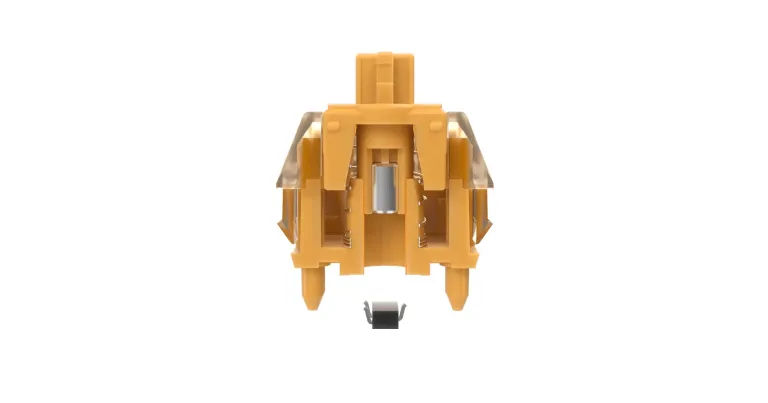
What Is the Magnetic Sensor Switch System for Keyboards? Mechanism, Advantages, and Disadvantages
The magnetic sensor switch system is gaining attention as a new type of keyboard key switch. This article explains how it works and discusses the advantages and disadvantages of choosing a keyboard with a magnetic sensor switch system.
Modified at: 2025.6.19Posted at: 2024.9.27
What Is the Magnetic Sensor Switch System for Keyboards?
The magnetic sensor switch system is a switch technology that uses a Hall effect sensor to detect key movements.
In mechanical keyboards and membrane keyboards, pressing a key sends a signal through physical contact, but in magnetic sensor switches, key input is detected without contact. For non-contact switches in keyboards, there are also optical switches.

What Are Optical Keyboards and Optical Switches?
With the rise of competitive gaming, optical keyboards and switches are gaining more attention for their speed and reliability. In this article, we explain how they work, along with their advantages and disadvantages.
Mechanism of Magnetic Sensor Switches
Magnetic sensor switches use the "Hall effect," which detects changes in magnetic fields as voltage. Magnetic sensor switches are equipped with a "Hall sensor" that utilizes this principle, sensing the position and movement of a magnet to detect input.
Specifically, a small magnet is placed under the keycap of the keyboard. When the key is pressed, the magnet moves closer to the Hall sensor, and the change in the magnetic field is detected, registering the input. Since the sensor only detects changes in the magnetic field, no physical contact is needed, which means there is no wear or failure caused by mechanical contact.
Advantages and Disadvantages of Choosing a Magnetic Sensor Switch Keyboard
Advantages
The greatest advantage of choosing a magnetic sensor switch keyboard is its durability. Unlike mechanical or membrane switches, there is no mechanical contact, so the lifespan of the keys is extremely long. This high durability is especially important in gaming situations where the same key is often pressed repeatedly.
Another major advantage is the fast input response and the ability to adjust the actuation point. Since input is detected by the magnetic sensor, users can set the actuation point themselves. You can finely adjust how far the key needs to be pressed and the input speed for repeated keystrokes. For example, depending on the settings, even a depression of about 0.1mm can be recognized as a key input, allowing you to type by just "stroking" the key rather than pressing it down.
There is also an advantage in terms of quietness. Most of the typing noise from keyboards comes from the physical switches, but since the magnetic sensor switch system does not involve physical contact, it is superior in quietness as well.
Disadvantages
The biggest disadvantages of magnetic sensor switch keyboards are their price and limited selection.
Unlike conventional keyboards that operate with "physical switch on/off," these switches use advanced sensor technology, making them more expensive than typical keyboards (with most models costing over 30,000 yen).
In the future, if the magnetic sensor switch system becomes more mainstream, the price of switches and keyboards may decrease, but for now, keyboards using this system are still a minority, limited to certain high-end or gaming keyboards.
In that sense, they are still a niche product, but how much you value the advantages will be the key point when choosing one.